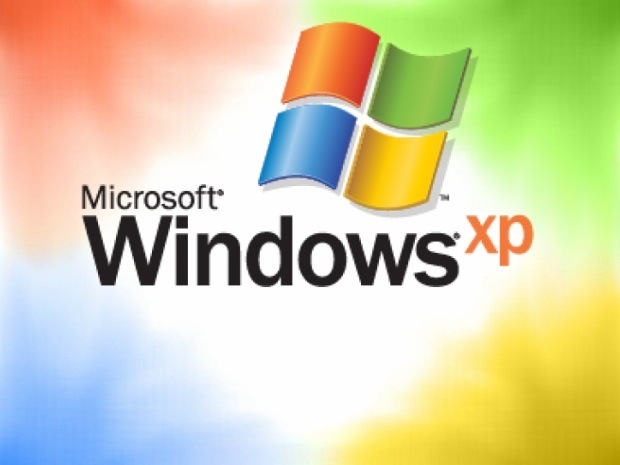How to Replace Windows Xp With Windows 10
If you're a Windows XP stalwart, you may decide to stick with Windows XP, even after Microsoft officially ends support. Scott Lowe discusses some of your options for making things work with what you have.

If you're still running Windows XP in your organization, you're probably painfully aware of the pending end of support for the venerable -- but wildly popular -- Windows XP operating system. Released in 2001, Windows XP was originally dismissed as a "play toy," thanks to an interface that people compared to Fisher Price products. But with a couple of rock solid service packs, XP became the real workhorse of the enterprise.
And then along came Vista. There's probably not much I can say here that hasn't been said elsewhere. Vista was an unmitigated failure on the part of Microsoft and its overambitious and poorly planned development process.
Next came Windows 7. Much like Windows XP, Windows 7 has been greeted with great acceptance in both the consumer and enterprise spaces. As a result, many organizations made the jump from Windows XP directly to Windows 7. However, plenty of others couldn't justify the time and expense of shifting to a new operating system when Windows XP was perfectly viable, so a lot of companies decided to wait for Windows 8.
And today, Windows 8 has been largely written off as a debacle, much like Vista. This leaves organizations with an option to move to Windows 7, which remains an excellent operating system, move to Windows 8, which is considered high risk for many, or find ways to stick with Windows XP and continue to make it work while the world awaits the release of Windows 9, which we all hope is a successful undertaking.
Economics of an upgrade
From a pure economics perspective, sticking with Windows XP would almost seem like a no-brainer. After all, it's expensive to move to a new platform. All kinds of testing needs to be done, not to mention software that has to be rewritten to work with those newer operating systems. Further, there is a need to buy upgrade licenses for those organizations that don't participate in one of Microsoft's licensing plans that includes Software Assurance.
Of course, when it comes to application compatibility, vendors probably won't race to enable support for an end-of-life operating system. Organizations choosing to stick with Windows XP need to understand that they might be left behind the curve when it comes to deploying newer software.
There is a clear business case for sticking with Windows XP, but organizations must be aware of the risks and challenges in doing so.
Be sure to check out these additional Windows XP resources:
- Restore a Windows XP backup in Windows 8
- Windows XP deadline looms, but many firms still aren't ready to leap
- Windows XP and Windows 8: The worst possible combination for Microsoft (ZDNet)
Application virtualization to the rescue
Fortunately, there are ways that organizations can work around this application compatibility issue while staying on Windows XP. One such method is to use a tool such as VMware's ThinApp application virtualization. With ThinApp, administrators wrap software deployments inside a virtual shell, which contains the components that are necessary to run the software on any supported system. With such a tool, organizations can, for example, deploy Office 2013 on Windows XP systems -- a scenario that would not be possible otherwise, since Microsoft doesn't support an XP/Office 2013 combination. While this method adds a layer of administrative overhead to software deployments, it is an effective way to stick with Windows XP while continuing to enjoy the benefits of new software.
Leverage the gift of anti-malware extensions
Security will be the biggest problem for those who choose to stay with Windows XP, and organizations will need to remain ever vigilant in their fight against digital crime. Fortunately, Microsoft and others are making this just a bit easier. Microsoft this week announced that it will continue to provide anti-malware support for Windows XP through July 2015. In addition, other security vendors have pledged to continue to support Windows XP. After all, there's still a market there!
Lock systems down when possible
High levels of system rights are one of the primary vectors used by attackers to compromise a system. When coupled with potential security issues in the underlying software, these increased privileges can be devastating. Windows XP users generally have very high levels of access to the system and their efforts can inflict significant damage when care is not exercised. Microsoft has taken steps to reduce these kinds of risks in newer operating systems, but to implement newer systems in XP would have meant completely reengineering the product. So, we have what we have.
For organizations planning to stick with Windows XP, it's time to look at solutions that can help save users from themselves. This may mean trying to operate without local administrative rights or even using a tool such as Deep Freeze to prevent a user from accidentally changing something on a system and introducing a compromise.
Summary
When you leave the office on April 8, 2014, that will be the last day you're running supported Windows XP systems in your company. But guess what? Nothing will look different when you walk in on April 9. Over time, though, there will be application and security challenges that must be overcome. It will take some time and vigilance for administrators to make sure that their organizations can continue to do business and remain secure while also continuing to run Windows XP.
How to Replace Windows Xp With Windows 10
Source: https://www.techrepublic.com/article/sticking-with-windows-xp-here-are-your-options/
0 Response to "How to Replace Windows Xp With Windows 10"
Post a Comment